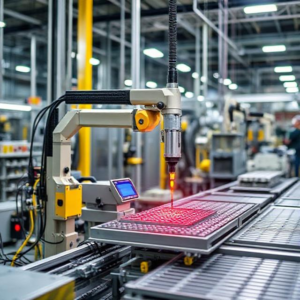Manufacturing Engineering is all about figuring out how to turn raw materials into finished products in the most efficient, cost-effective, and safe way. It’s like finding the best way to build something, whether it’s a car, a phone, or even a small part for a bigger machine. Manufacturing Engineering is about designing and managing the process that turns raw materials into finished products, using the best machines, tools, and techniques to make the process as efficient, safe, and cost-effective as possible.

Steps in Manufacturing Engineering involves:
- Planning the Process: Engineers figure out how to take raw materials (like metal, plastic, or fabric) and turn them into finished products. They decide the best machines and tools needed for the job, and how to set everything up.
- Choosing the Right Tools and Machines: Depending on what needs to be made, engineers choose the best machines, like CNC machines, 3D printers, or assembly lines. They also decide on tools, like drills or molds, that will shape the material in the right way.
- Optimizing the Process: Once the machines and tools are chosen, engineers find ways to make the manufacturing process faster, cheaper, and better. This might involve designing a more efficient assembly line or reducing waste (like leftover materials) during production.
- Quality Control: Manufacturing engineers make sure that the products coming off the production line are safe, strong, and meet the required standards. They create tests to check the quality of materials, parts, and finished products.
- Troubleshooting: Sometimes things don’t go as planned during production. Manufacturing engineers figure out why things are going wrong and fix the problems—whether it’s a machine breaking down, quality issues, or delays in production.
- Improving and Innovating: They are always looking for ways to improve the process. This could mean adopting new technologies, improving worker safety, or reducing energy use to make production more sustainable.











